|
|
|
|
Products mentioned in this Article
--None--
|
|
|
|
|
|
|
|
|
 |
|
|
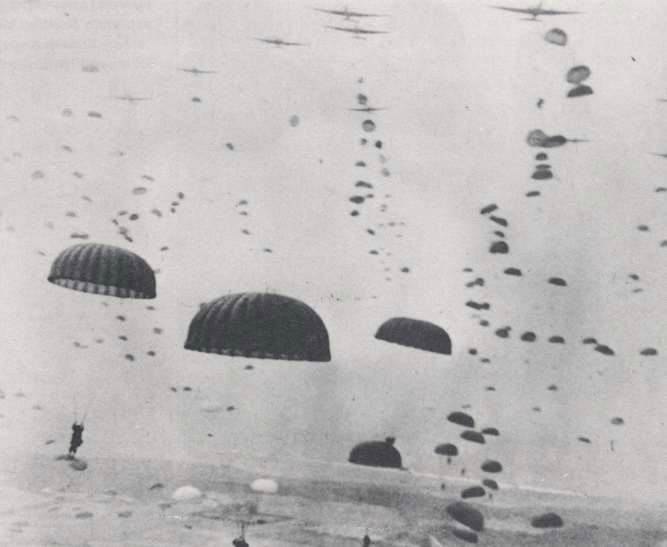 |
Point Of The Spear
Airborne Commanders of Operation Market Garden
by Mike Haught
Operation Market Garden was a tricky undertaking. No other airborne operation in history compares to the size and scale of Market Garden. Two American and one British airborne divisions and a Polish brigade would be involved. They would drop behind enemy lines into Holland and capture several critical crossings along a highway that stretched from the Belgian border to the city of Arnhem, positioned on the Rhine River.
Download
a PDF version of this article here...
|
While the airborne troops secured the corridor, the British 30 Corps would smash through the German lines on the Belgian border and charge up the highway, linking up with all paratroopers along the way. The operation relied on the airborne troops quickly taking their objectives and making sure that 30 Corps reached Arnhem on time.
Each airborne commander had to plan how their division would achieve its objectives down to the last detail. Trouble was, they had less than 10 days between being told about the operation and actually jumping into Holland.
|
Taylor’s ‘Screaming Eagles’
Major General Maxwell Taylor commanded the American 101st ‘Screaming
Eagles’ Airborne Division. He was assigned the lower portion of the
corridor and would be responsible for securing the crossings of Son and
Veghel. After that, his division provided corridor security for 30
Corps.
Taylor chose landing positions relatively close to his objectives,
making sure that he put troops on both sides of the river crossings and
attached airborne engineer support to each regiment so that it could
quickly overcome the enemy and secure the bridges.
Since he could expect a quick link-up with 30 Corps, he opted to leave
behind his division’s artillery in the initial drop, taking advantage of
the nearby British guns to lend support. This allowed him to focus his
first drop on delivering as much infantry as he could to the
battlefield.
Once the initial objectives were taken, he took to the offensive,
launching spoiling attacks against the Germans to keep them from
attacking in concert. Despite a few instances where the Germans managed
to temporarily cut the road, Taylor kept the corridor open for business
from Eindhoven to Veghel.
|
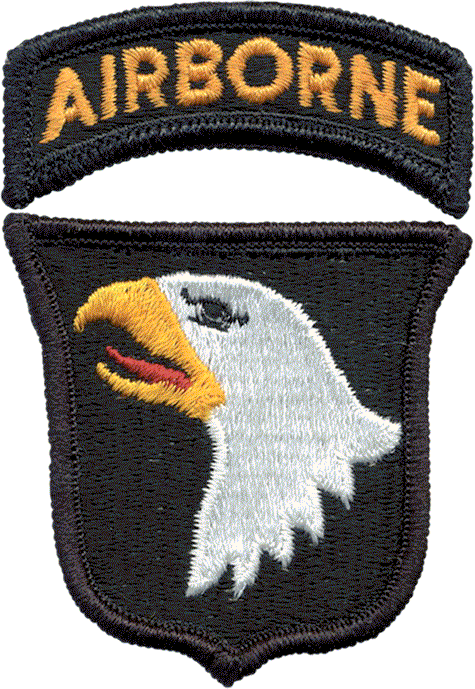 |
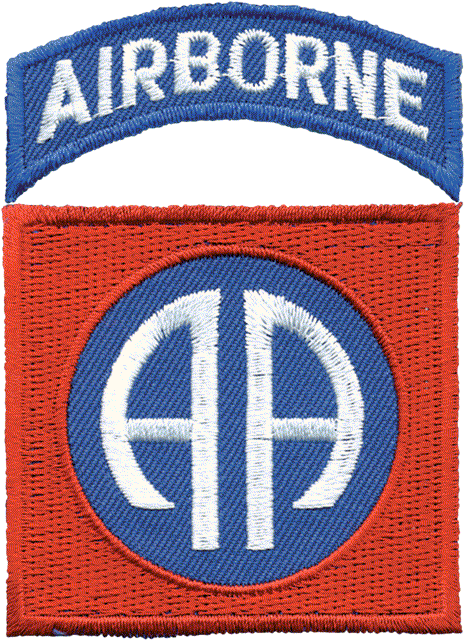 |
Gavin’s ‘All Americans’
Brigadier General James Gavin’s 82nd ‘All American’ Airborne Division was given the middle stretch of the highway. He had to secure the major crossings of Grave and Nijmegen, while also contending with the threat from Germany itself, which was only a few miles away from the battlefield.
Unlike Taylor, Gavin couldn’t rely on a speedy link-up with 30 Corp to provide artillery support, so he opted to bring his parachute artillery along with him. He also decided to parachute the guns into action, as opposed to the other two divisions which landed the guns by glider. Gavin reasoned that the daylight drop and the open terrain would allow the guns to be collected easier than they had been in Normandy (which was a complete disaster with only a couple of guns becoming operational). This gave him plenty of artillery support and freed up gliders for the rest of the division.
Gavin was an expert tactican and made sure that his division was landed as close to his objectives as possible. He then struck out and secured the Grave Bridge and then secured his flank at the Groesbeek Heights.
Though unable to secure the Nijmegen Bridge straight away, he launched a daring assault with the assistance of 30 Corps, capturing the bridge intact and getting the column moving again.
|
Urquhart’s ‘Red Devils’
Major General Roy Urquhart’s British 1st ‘Red Devils’ Airborne Division was to secure the northern most objective: Arnhem. The bridge over the Rhine in Arnhem was the crowning objective of the whole operation.
Urquhart’s reputation suffered a bit from being an outsider to airborne tactics, having only been in command of since January 1944. He lacked the experience in planning airborne operations of Taylor and Gavin, and this may have had some impact on why he was not able to convince his superiors to land him closer to his objectives.
Despite being new to airborne warfare, he was still a very adept field commander. He played with the cards he was dealt. Some of his troops, under the command of Lieutenant Colonel John Frost, managed to reach the bridge and hold out for several days.
|
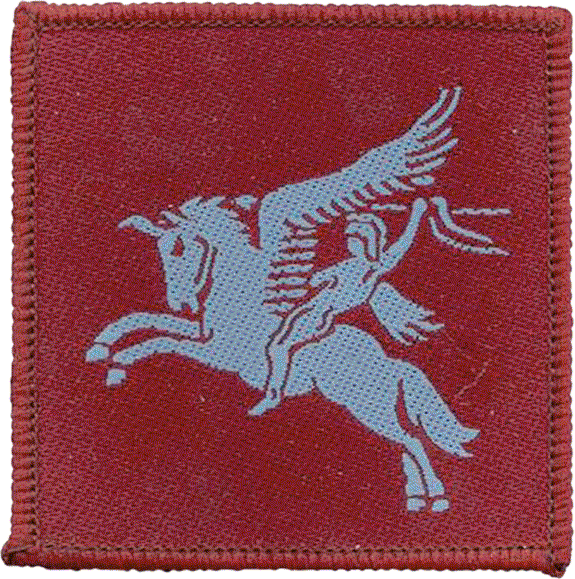 |
Urquhart tried to relieve Frost with a concerted
assault with his parachute brigades, but without support from 30 Corps
he could not break through the enemy lines and was forced to fall back
and establish a defensive perimeter until help could arrive.
Urquhart’s perimeter in Oosterbeek was held with resolve. His troops saw
off several major attacks aimed at cutting them off from the Rhine.
Urquhart used a series of tactical withdrawals to shorten his lines. He
also kept a mobile reserve to strike back and capture any lost
territory.
This kept the division operational and safe from being cut off. Urquhart finally ordered a full
withdrawal when 30 Corps arrived to cover them. He planned the tricky
night-time evacuation and managed to get over 2,700 men across the
river. |
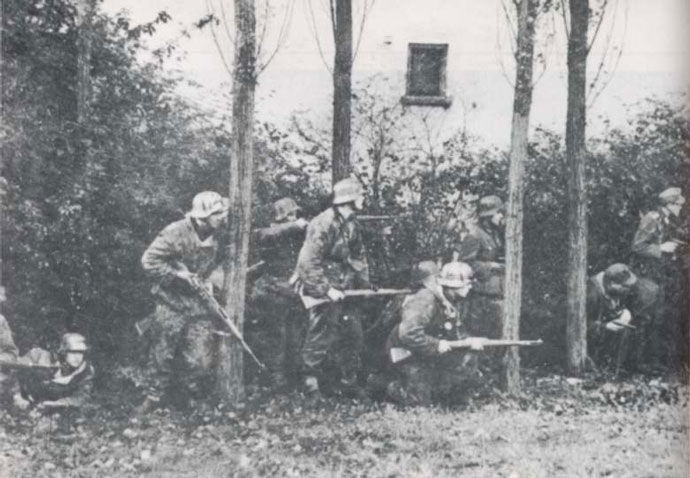 |
Sosabowski’s Poles
Major General Stansilaw Sosabowski commanded the 1st Polish Independent Parachute Brigade which was attached to the British 1st Airborne.
Sosabowski’s Polish paratroopers were to land a day after the rest of the division on the southern end of the Arnhem Bridge to secure the area from German counterattacks. However, as the battle progressed and Frost was overrun in Arnhem, the Polish were redirected to the small village of Driel to help relieve Urquhart in Oosterbeek.
|
After a bad start, the Polish paratroopers finally took off and landed
in Driel on 21 September. Sosabowski wasted little time getting to the
river to try and get across. However, he encountered stiff resistance
and was forced to fall back to Driel to await help from 30 Corps.
He established a perimeter and expertly kept his reserves on the move to
counter German attacks until finally relieved a few days later by the
lead elements of 30 Corps. |
 |
In Flames Of War
Warriors in Flames Of War represent outstanding soldiers who perform amazing feats, such as heroic fights or provide inspiring leadership in desperate situations. These special warriors can be taken in a Flames Of War army to add flavour and excitement. These particular warriors are divisional or brigade commanders and their rank means they will take command of any force they are leading as Higher Command teams.
Market Garden was a race against the clock for both Allied and German generals. Each had a single overriding priority to make sure his troops got to where they were needed as quickly as possible. The airborne commanders each had their own unique way of doing just that.
|
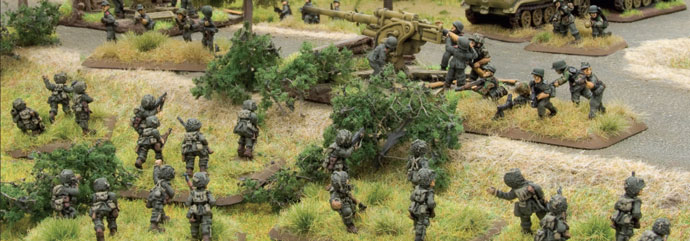 |
| Since this was such an obvious theme, I wanted to
capture this urgency with these heroes. Each of these warriors has
something that helps get them to their objective in order to capture and
hold it. Adding these warriors to your airborne forces in Flames Of War
will transform them into Market Garden forces. You will need to get to
your objectives as quickly as possible and then hold them until
relieved. These warriors will help you do just that and keep the
corridor open to Arnhem! |
Major General Roy Urquhart
Robert ‘Roy’ Urquhart had a passionate dislike of flying, so his appointment to command the 1st Airborne Division in January 1944 seemed a strange choice. However, Lieutenant General Browning, commander of the First Allied Airborne Army, had faith in the battle-proven officer.
In September 1944, Urquhart was given orders to jump with his division into occupied Holland during Operation Market Garden, the largest airborne invasion in history. Urquhart pushed for drop zones close to Arnhem. However, his request was denied because it was feared that there would be too much anti-aircraft fire. Instead, the division was to land in two parts, over two days, six miles from their objective bridge in Arnhem.
|
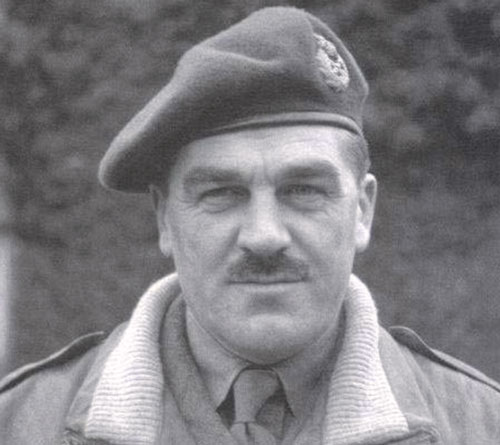 |
When the division landed, Urquhart dispatched his
1st Parachute Brigade to seize the Arnhem Bridge and deployed his 1st
Airlanding Brigade to defend the drop zones, the division’s vital life
line.
All but one of the 1st Parachute Brigade’s battalions were halted only a mile west of the bridge. Urquhart was further frustrated when he found that his wireless sets were inoperable, so he had to give orders in person.
The following morning the second half of the division arrived and Brigadier Lathbury’s 2nd Parachute Brigade joined the push for the bridge.
|
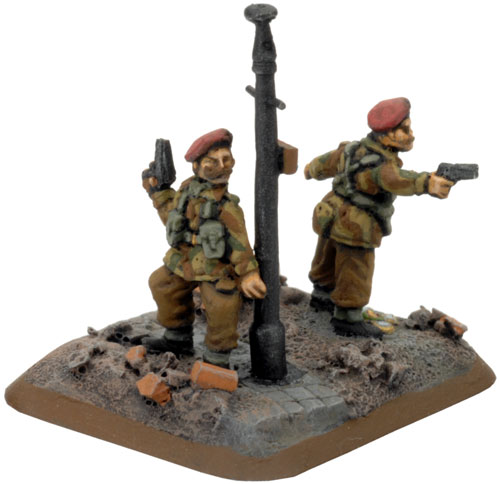 |
Urquhart and Lathbury led the attack from the front. During the attack a German machine-gun opened fire on the officers, wounding Lathbury. Two other officers helped Urquhart get Lathbury inside a nearby house. A German passed by the window of the house and saw the British inside. Before he could lift his weapon, Urquhart blasted him with his revolver.
The three left Lathbury in the house owners’ care and tried to make it back to British lines. The party didn’t get far before they were forced to take refuge in the attic of another house for 14 long hours before they could escape and return to their lines. The following morning, Urquhart and his party returned to the
divisional headquarters which had moved to the Hartenstein Hotel in Oostebeek during his absence.
|
Despite being almost surrounded, Urquhart believed his division could hold out until 30 Corps arrived. He established a defensive perimeter in Oosterbeek. Radio contact was made with 30 Corps on 24 September and the advance guard reached the southern banks the following day. Several attempts were made to send reinforcements across the river, but were all thrown back.
It became clear to Urquhart that his position was becoming rapidly untenable and he began perparations to withdraw across the Rhine. Finally on the night of 25 September he sent the message to his troops, ‘All will be ordered to break out rather than surrender. We have attempted our best and we will continue to do our best as long as possible’.
Check out Major General Roy Urquhart in the online store now...
|
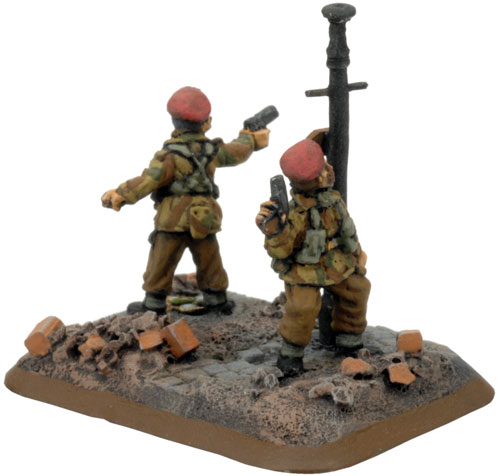 |
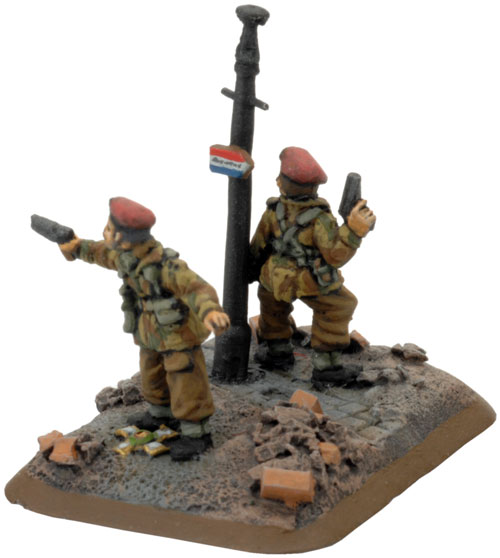 |
Under the cover of dark, 2,720 men of the 1st Airborne Division managed to escape across the Rhine by daybreak. The division returned to England. Urquart’s remained a major general until he left the army in 1955.
Major General Roy
Urquhart in Flames Of War
Major General Roy Urquhart is a Warrior and a Higher Command Pistol team rated Fearless Veteran. Urquhart is an Independent Team. Major General Roy Urquhart may join a British Parachute or an Airlanding Company (found in A Bridge Too Far) for +25 points.
To the Bridge
Urquhart’s focus was to get his division to Arnhem Bridge. Within minutes of landing, he sent his lead elements ahead to secure the objective.
Infantry and Man-packed Gun teams in a platoon led by Urqhart may move 16”/40cm instead of the normal 12”/30cm when Moving at the Double.
|
Establish the Perimeter!
Once Urquhart’s forces took a position they held until all possibilities of relief had been exhausted. This occurred both at the Arnhem bridge and the Divisional perimeter at Oosterbeek.
A platoon led by Major General Urquhart may re-roll failed attempts to Dig In.
Licensed to Kill
Urquhart was armed with his trusty Webley service revolver, which came in handy when he was cut off from his men.
Urquhart may re-roll failed To Hit rolls with his pistol and does not suffer the normal +1 To Hit penalty when Moving with ROF 1.
Team Range 4"/10cm; ROF 1; Anti-tank 1; Firepower 6
|
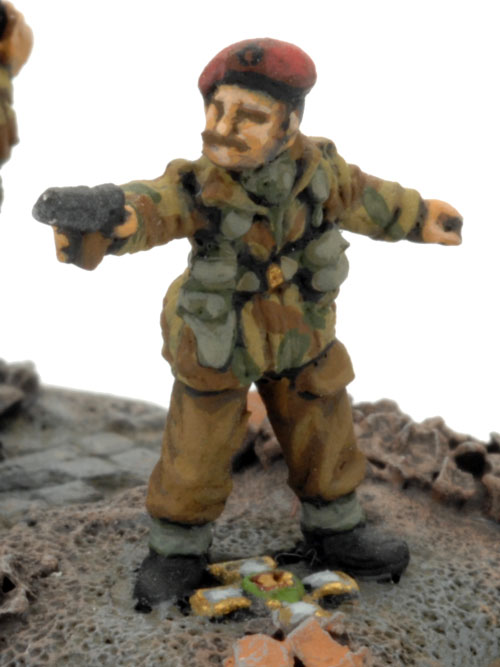 |
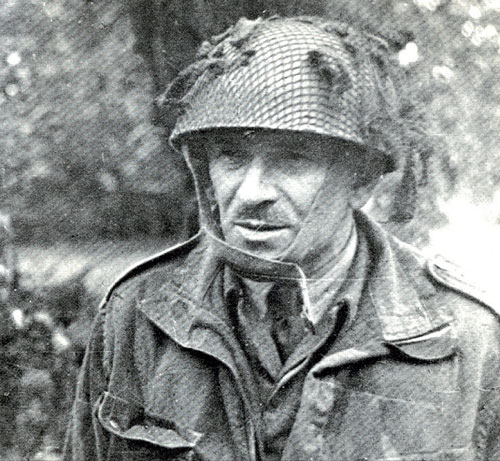 |
Major General Stanislaw Sosabowski
Stanislaw Sosabowski was born in 1892. He fought on the eastern front in World War I. After the war he became an officer in the new Polish Army and when Germany invaded Poland in September 1939, Sosabowski was a full colonel. After Poland fell under German control, he escaped to France and commanded the exiled Polish 4th Infantry Division until the fall of France 1941. He, along with 3,000 other Polish troops evacuated to England.
In September 1941, The Polish government-in-exile formed the 1st Polish Independent Parachute Brigade and Sosabowski was given command of the new brigade. The brigade was to remain under direct Polish control, taking orders only from the Polish government in exile.
|
The brigade conducted its own training with a little help from the British. During this time in training, Sosabowski completed paratrooper training at the age of 50.
In the months leading up to June 1944, the brigade suffered from a severe lack of resources, but nevertheless remained on vigilant standby, waiting for the green light to jump into Poland and liberate their homeland.
|
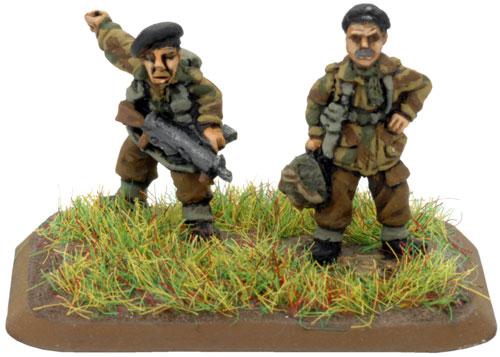 |
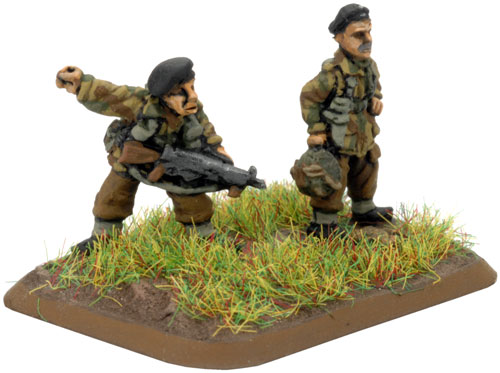 |
In June 1944, the Polish government in exile came
under increasing pressure from the British to release the Polish paras
for service in northwest Europe. The government finally gave in and the
regiment was placed under the command of the British 1st Airborne Corps.
Sosabowski was also promoted to Major General and the brigade began
receiving a lot more training resources and equipment.
|
After the invasion of Normandy, there were several airborne operations planned for northern France and Belgium. Each time a plan was proposed, Sosabowski would run afoul with his British superiors by repeatedly questioning their plans. Nothing came of these plans due to the rapid German retreat, but Sosabowski’s
reputation as argumentative began to take shape.
When he was told about his role in Operation Market Garden, Sosabowski complained that the plan underestimated the German’s response. While events would prove his concerns valid, they did nothing to improve his situation with his British superiors.
|
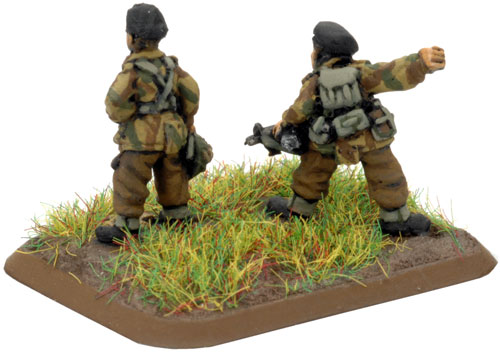 |
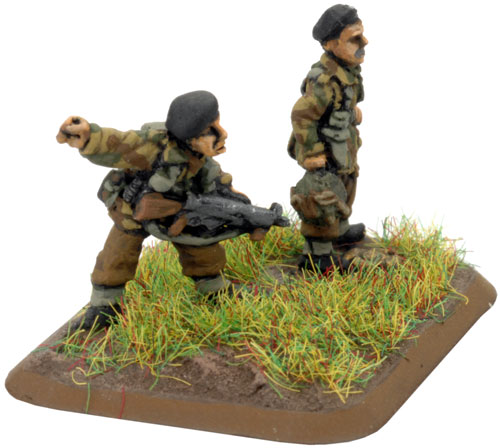 |
During the operation, Sosabowski and the majority of the brigade were scheduled to land south of Arnhem on 19 September (D+2). However, as they waited, the weather in England deteriorated and they were delayed two days and the drop zone was changed to near the town of Driel.
Sosabowski and the Polish brigade landed late in the afternoon of 21 September and tried to find a way across the Rhine to reinforce the British perimeter. However, the ferry they planned to use was destroyed and the brigade was forced to form a defensive perimeter at Driel.
Check
out Major General Stanislaw Sosabowski in the online store now...
|
The Germans quickly attacked the Poles and Sosabowski moved from unit to unit, encouraging his men to hold. Once the link-up was established with the lead elements of 30 Corps, Sosabowski tried twice to get his men across the river under cover of darkness. Due to the poor coordination, poor equipment, German fire,and swift currents only about 200 Polish paratroopers made the crossing.
After Market Garden, Sosabowski and his paras
returned to the United Kingdom. Shortly thereafter the British forced
the Polish government-in-exile to remove Sosabowski from command. He was
relieved and finished the war completing obscure administrative roles.
|
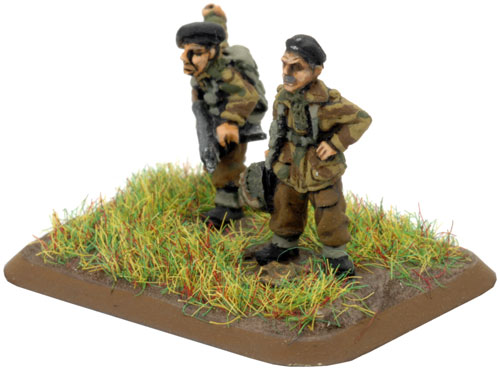 |
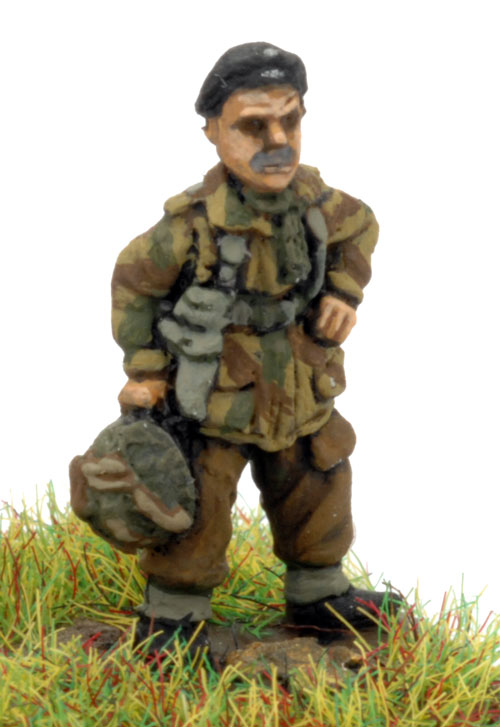 |
When the Soviet Union occupied Poland at the end of the war, Sosabowski
opted to remain in England. He died on September 25, 1967 and his ashes
were returned to Poland.
Major General Stanislaw Sosabowski in Flames Of War
Major General Stanislaw Sosabowski is a Warrior and a Higher Command Rifle team rated Fearless Veteran. Sosabowski is an Independent Team. Major General Stanislaw Sosabowski may join a Polish Parachute Company (found in A Bridge Too Far) for +45 points.
What About the Germans?
Sosabowski was always critical of any plan put in front of him that did not adequately consider the German’s response to the operation. He preferred to be prepared for any contingency.
At the start of the game after both players have deployed, but before any Reconnaissance Deployment moves, a force commanded by Sosabowski may redeploy a single platoon anywhere within its normal deployment area.
If the platoon was in Foxholes at the start of the game, they remain in Foxholes after this redeployment and the platoon is not considered to have moved in its first turn.
|
Timely Reinforcements
Sosabowski immediately put his reinforcements from 30 Corps to work to first defend and then expand his perimeter.
Once per turn, a force led by Sosabowski may re-roll one die rolled to receive Reserves.
|
Brigadier General James Gavin
James Gavin was born in 1907 and joined the US Army at the age of 17. He was accepted into West Point and proved an able tactitician. Gavin literally wrote the book on US paratrooper tactics, having carefully studied German examples. He participated in all of his division’s combat jumps, earning him the nickname: ‘Jumping General’.
By 1942 he was the commander of the 505th Parachute Infantry Battalion and was promoted to Colonel shortly thereafter. He trained his men and built up his regiment as the example for the others to follow. Gavin’s first combat jump was Operation Husky, the Allied invasion of Sicily.
Gavin’s next major operation was Normandy. He was promoted to Brigadier General and became the assistant divisional commander of the 82nd ‘All American’ Airborne Division, commanding the parachute element of the division. His leadership in Normandy earned him the full command of the division for Operation Market Garden.
|
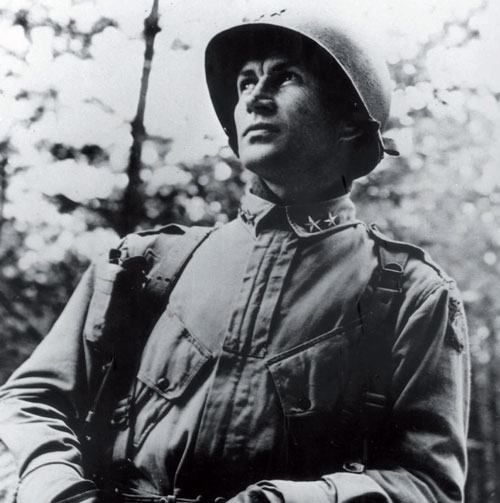 |
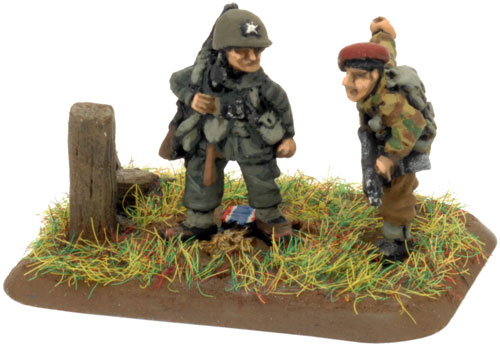
|
In September 1944, Gavin set to work planning his
division’s role in Market Garden. He had more success than his British
counterparts when he insisted on dropping his men as close to the
objective as possible. Even though the initial casualties may be high,
the objectives could be quickly secured before the Germans could
organise a determined defence.
He also opted to have his support weapons parachuted in rather than by
glider, freeing himself from worrying about selecting and defending
landing zones and allowing him to concentrate on the initial objectives.
|
Gavin also had the help of Captian Arie ‘Harry’
Bestebreurtje, the Dutch
liaison officer from the Jedburgh team ‘Claude’ assigned to the 82nd
Airborne. Gavin trusted Bestebreurtje to work with the resistance to
assist Gavin’s efforts throughout the battle. Gavin’s troops quickly
secured the Grave bridge, the first of the 82nd Airborne’s objectives.
He was justifiably concerned that the Germans would counter his landings
from the Ruhr, so his next priority was to secure the important
Groesbeek Heights to protect his flank.
He then turned his attention on Nijmegen, however
by this time the Germans had already reinforced the town. Gavin’s
paratroopers encountered intense German resistance and could make little
headway. He would have to wait for the arrival of 30 Corps to push his
way through Nijmegen.
|
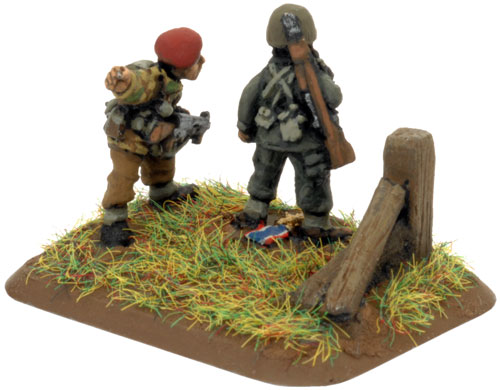 |
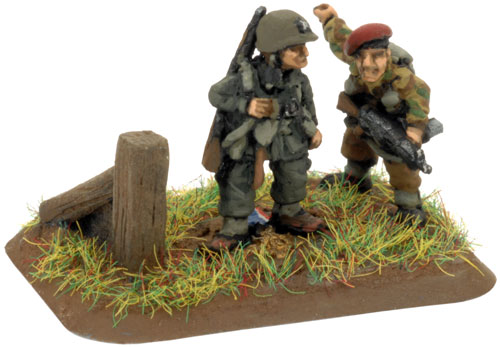
|
When the column arrived, Gavin implemented a bold
river assault on 20
September to capture the Nijmegen bridge and placed Major Julian Cook,
in command. The plan was a brilliant success and by dawn the next day 30
Corps was back on the road to Arnhem with Gavin’s division in close
support.
Gavin continued to command the 82nd Airborne Division until the end of
the war. He went on to become a champion of desegregation within the US
Army and also became heavily involved in the development of airborne
strategy and tactics, writing several books on the matter. Gavin retired
as a lieutenant general in 1958 and served as the American ambassador
to France. |
Brigadier General James Gavin in Flames Of War
Brigadier General James Gavin is a Warrior and a Higher Command Rifle team (Automatic rifle). He is rated Fearless Veteran and is an Independent Team. Brigadier General James Gavin may join a US Parachute Rifle Company (from the 82nd Airborne Division found in Hell’s Highway) or a Glider Rifle Company for +40 points.
Learn how
to field US Glider
Troops During Operation Market Garden here...
Isolate the Battlefield
General Gavin’s tactical orientation had his men manoeuvring to counter German efforts to cut the lifeline to the British 30 Corps racing northwards towards Arnhem. These efforts, combined with Bestebreurtje’s intelligence gathering from the local underground, protected the Allied flanks and halted German attempts to sever the division’s supply line.
Before your opponent rolls for Reserves you may roll one die
for each Combat and Weapons Platoon from your company currently held in Reserve.
- On each roll of 6 your opponent rolls one less die when
rolling for Reserves this turn.
- On any other roll, the enemy platoon arrives as normal.
|
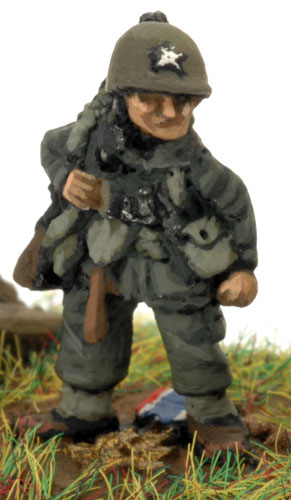 |
Count On It
US Airborne troops led by Gavin were expected to and always met his
demands for rapidly moving on foot, engaging the enemy, and then moving
on. While commanding a Regiment, Gavin’s men once force-marched 50 miles
(80km) and fought an engagement in less than 36 hours!
Each time a Parachute Rifle Platoon led by Gavin has Moved at the
Double, roll a Skill Check for the platoon:
- If successful, the platoon is not considered to have Moved at the Double
during the opponent’s next turn,
- Otherwise, the platoon Moves at the Double as normal.
Check out Brigadier
General James Gavin in the online store here...
|
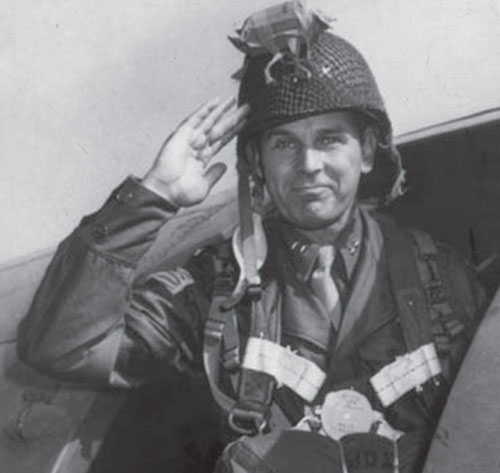 |
Major General Maxwell Taylor
Maxwell Taylor graduated from the United States Military Academy in 1922, excelling in politics and language skills. In the interwar years Taylor rose through the ranks under the tutalage of General Matthew Ridgway, then commanding 82nd Airborne Division.
When the 82nd Airborne was sent to Italy, Taylor was covertly sent ahead of the division to negotiate with the Italian government and organize a contested air drop near Rome. However, the Germans discovered his plan and Taylor called off the mission just in time to prevent a catastophe.
When Taylor returned from his mission he was assigned the command of the newly raised 101st ‘Screaming Eagles’ Airborne Division and he jumped into Normandy with his new command, leading the elite division to victory.
|
His next operation was Market Garden. When he was
given the plan for the operation, he knew that his division was going
to need to hold a rather large portion of the highway open for the
British 30 Corps.
To deal with this, he readied the 101st for a
fight in what he called ‘Indian Territory’. He saw the battle as similar
to the US Cavalry’s battles against the Native American Indians in the
Old West. There the cavalry established forts from which to operate and
from there struck out in a series of attacks to keep the Indians
from
attacking in concert. |
Taylor gave each of his regiments a point along
the highway to anchor their defences upon. From these strong points the
division would launch spoiling attacks against the Germans, keeping them
occupied while 30 Corps charged north.
He also anticipated the
immediate need for engineers and broke up his 326th Airborne Engineer
Battalion and issued a platoon to each regiment. This enabled each
regiment to tackle engineering tasks as they came up. Such was the case
with the 506th Parachute Infantry Regiment when the Germans demolished
Son bridge. The engineers threw together a foot bridge and kept the
506th moving to Eindhoven. |
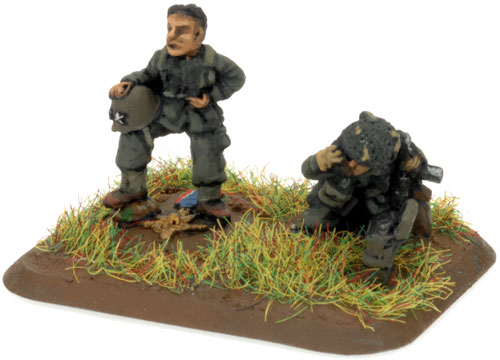 |
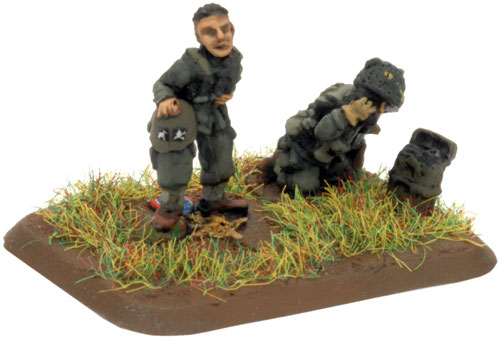 |
Shortly after building a prefabricated Bailey
bridge over the Son, the Germans launched an armoured counterattack.
Taylor took personal command of the defence of the vital crossing and
told reinforcing platoons where to go to fill gaps in the line. When he
saw enemy tanks arriving, he lept into his jeep and tracked down a 57mm
anti-tank gun and crew limbered it up to the jeep, sped back to the
battle, helped deploy it, and directed the gun’s fire. This timely
arrival helped turn the tide of battle in his favour and
the Germans
withdrew, never to assault the Son Bridge again. |
Taylor’s men kept the highway open long enough to get the main column of 30 Corps through to Nijmegen before the Germans finally managed to cut the road at Koevering. Taylor brought the 506th PIR north and cleared the road once again and the Germans never managed to duplicate their success.
Taylor’s men kept the highway open long enough to get the main column of 30 Corps through to Nijmegen before the Germans finally managed to cut the road at Koevering. Taylor brought the 506th PIR north and cleared the road once again and the Germans never managed to duplicate their success.
|
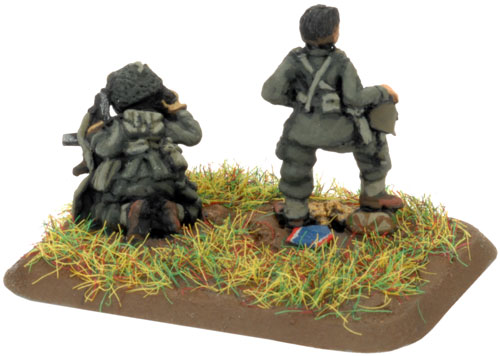 |
After Market Garden Taylor went back to the US to
attend staff conferences and was not present to command the 101st
through the Battle of the Bulge (Brigadier General McAuliffe commanded
in his place).
After the war Taylor’s career turned to politics
and he eventually became the Army Chief of Staff working closely with
the Kennedy administration during the Cold War and Vietnam. |
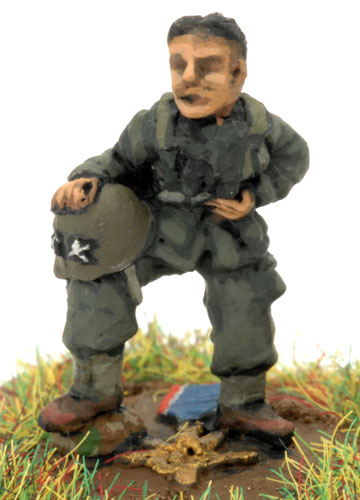 |
Major General Maxwell Taylor in Flames Of War
Major General Maxwell Taylor is a Warrior and a Higher Command Carbine team rated Fearless Veteran. Taylor is an Independent Team. Major General Maxwell Taylor may join a US Parachute Rifle Company (from the 101st Airborne Division found in Hell’s Highway) or a Glider Rifle Company for +35 points.
Learn how
to field US Glider
Troops During Operation Market Garden here...
Indian Country
The 101st Airborne launched spoiler attacks against the Germans to put them on their back foot and force them to have to react and defend. Taylor likened his job to that of the US Cavalry during the Indian Wars in the American West.
A force led by Taylor may make an additional Reconnaissance Deployment move (see page 194 of the rulebook) with any nonreconnaissance platoon (even though its not a Reconnaissance Platoon), provided that the Reconnaissance Deployment move takes the whole platoon out of its deployment area.
Check out Major General Maxwell Taylor in the online store here...
|
Last Updated On Monday, July 5, 2010 by Blake at Battlefront
|
|
|